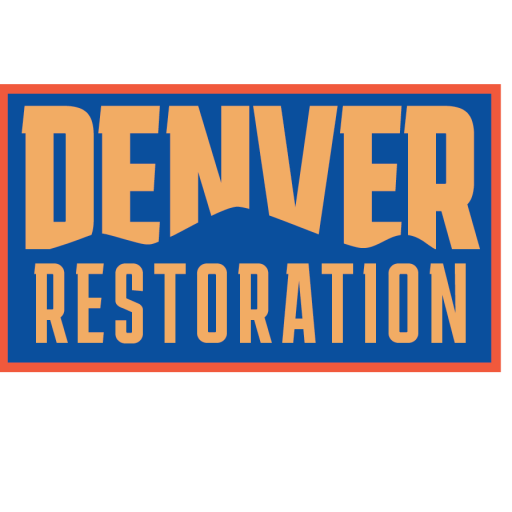Overview of Contents Cleaning after a Disaster
When a disaster strikes, it often leaves a trail of destruction that can be overwhelming to handle. One of the biggest headaches involves cleaning up the mess left behind, a process that requires expert knowledge and specialized equipment. It is indeed a daunting task, but with the right information and resources, it can be made a lot more manageable. This post will guide you through the simple yet effective steps to carry out contents cleaning, thereby easing the burden of disaster recovery.
The Basic Cleaning Steps
A successful contents cleaning process involves a series of steps that ensure your property is restored to its original state. Here are some easy-to-follow guidelines:
1. **Damage Assessment:** This is the initial stage where you evaluate the extent of destruction caused by the disaster. It is crucial to identify which items are salvageable and which ones aren’t. It’s also an opportunity to document everything for insurance purposes.
2. **Sorting and Organizing:** Once the damage has been assessed, it’s time to sort items into categories. Separating damaged and undamaged goods helps streamline the contents cleaning process.
3. **Cleaning and Decontaminating:** This stage involves the actual cleaning of items. Depending on the nature and extent of the damage, various methods may be employed, such as dry-cleaning, wet cleaning, or even specialized treatments for smoke or water damage.
4. **Restoration and Replacement:** Lastly, the cleaned items are restored to their original positions. Any items that were irreparable are replaced.
Essential Tips for Effective Contents Cleaning
Safety First
It’s important to ensure safety while conducting contents cleaning. You might encounter hazardous substances in the aftermath of a disaster, such as mold or chemical residue. Always use protective gear like gloves, masks, and goggles to avoid exposure. The American Red Cross offers excellent guidelines on disaster cleanup and safety.
Salvaging Electronics and Valuables
Certain items require special attention, especially electronics and other valuables. Salt water, for instance, is particularly damaging to electronic devices. There’s a comprehensive discussion at SuperUser on how to salvage SD cards exposed to salt water.
Professional Help
Sometimes, the task at hand may be too complex or demanding, requiring professional help. Companies like GW Savage offer professional contents cleaning services. They have the expertise and equipment to handle even the most challenging restoration jobs.
Embracing Simplicity in Disaster Recovery Cleaning
The process of contents cleaning after a disaster doesn’t have to be overly complicated. By following the basic steps outlined above and ensuring safety, you can effectively manage the aftermath of a disaster. But remember, when in doubt, always seek professional assistance.
Looking for a reliable fire restoration service? Check out this article for tips on how to choose the right one.
Struggling with smoke odor? Here’s a guide on strategies to eliminate it effectively.
Worried about mold in your bathroom? Discover the best mold-resistant paints in this post.
Remember, filled with simplicity is not just about making the process easier, it’s about ensuring that you can recover as quickly and efficiently as possible. After all, recovery is not just about cleaning up, but also about getting back to normalcy and rebuilding life.
Deep Diving into Disaster Classification
Understanding disaster categories can help you tailor your cleanup efforts accordingly. Whether it’s water, fire, or mold damage, each kind of disaster comes with its own unique restoration challenges. Learning about the specifics can save you time, money, and unnecessary stress during the recovery process.
Dealing with Water Damage
1. **Assessing The Severity:** Water damage is classified into four classes. Class 1 indicates a minimal amount of water, absorption, and evaporation, while class 4 means a significant amount of water has caused damage.
2. **Identifying Source and Contaminants:** Depending on the origin and nature of the water involved, it’s either classified as clean, gray, or black water, with the latter being the most contaminated.
3. **Understanding Effects of Water Damage:** Excessive water can lead to structural damage and the growth of mold and mildew, which can contribute to health risks.
Here’s a detailed guide on basic information about cleanups by EPA you can refer to for a comprehensive understanding.
Conquering Fire Damage
1. **Recognizing Fire and Smoke Damage:** Fire damage isn’t limited to the components completely or partially burnt. Smoke can lead to corrosive damage on metal and discoloring of walls and other surfaces.
2. **Undoing Fire Damage:** Cleaning after a fire involves removing soot, and deodorizing to get rid of the smell of smoke. This needs specialized tools and knowledge, making it a task often best left to professionals.
Ensure to learn about how to remove smoke smell from your house after a fire for a detailed guide on dealing with aftermaths of fire damage.
Molding Your Way Out of Mold Damage
1. **Identifying Mold:** Mold requires moisture to grow and can quickly infest damp areas, posing a hazard to health and property alike.
2. **Treating Mold:** It’s crucial to treat mold at the earliest to prevent it from spreading. Professional mold remediation involves assessing the extent of mold invasion, containing the mold, removing it, and drying the area to prevent recurrence.
The Role of Insurance in Disaster Recovery
Insurance plays an important role in disaster recovery. From covering costs of replacement and repair to footing the bill for alternative accommodation, the right insurance can make the path to recovery smoother. Here’s what you need to know:
1. **Understanding Your Coverage:** Not all policies may cover all kinds of disasters. It’s important to understand your coverage, so you know what you’re entitled to in case of a disaster.
2. **Documenting Damage:** It’s crucial to document the damage immediately after occurrence for effective insurance claims. This includes taking pictures and videos, and making a list of all affected items.
3. **Navigating Insurance Claims:** The insurance claim process can sometimes be complicated and time-consuming. Professional help from public adjusters or claims consultants can make the process easier.
Importance of Professional Restorers
While it’s possible to undertake minor cleanup and restoration post-disaster, for extensive damage, professional assistance is often essential. Companies like Lazy Susans Cleaning Service and Simple Green specialize in disaster recovery cleaning. They possess the knowledge, tools, and experience to efficiently restore your property to its pre-damaged state.
Final Word
The process of contents cleaning after a disaster may seem daunting, but understanding how to tackle it can make a world of difference. From learning the specifics of different disasters to knowing the role of insurance and the value of professional help, every bit of information could make your road to recovery less challenging.
Struggling with maintaining your premises post-disaster?
Remember, disaster recovery is a process, not a one-time event. It calls for patience, resilience, and the right strategy. But with unwavering determination, you can indeed rebuild and bounce back stronger than before.

